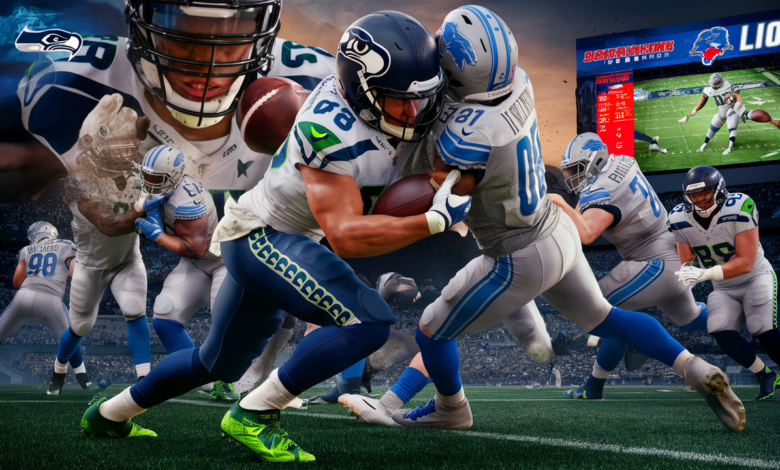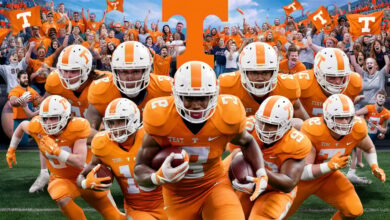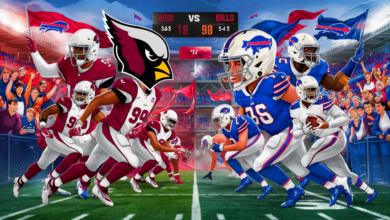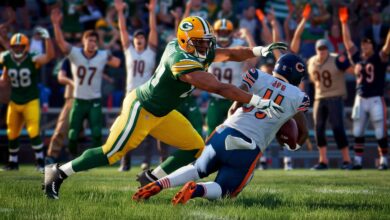“Seahawks vs Detroit Lions Match Player Stats: Who Stood Out”

When the Seahawks vs Detroit Lions Match Player Stats travelled to face the Detroit Lions on September 30, 2024 at Ford Field, it wasn’t just another game on the calendar — it became a showcase of statistical milestones and standout individual performances. Despite Seattle producing one of their highest yardage totals of the season, Detroit’s efficient execution and historic passing display tipped the balance decisively in favour of the Lions. In this article, we take a deep dive into the match player stats of the Seahawks vs Lions matchup, identifying who delivered, how the numbers shaped the game, and what the data tells us about the performance of both teams.
Overview of Game & Team Stats
The Lions defeated the Seahawks 42-29, ending a long stretch without a win against Seattle. From a team statistical perspective, this game was unusual: Seattle amassed 516 total net yards to Detroit’s 389, yet the yards didn’t convert to a win. The time of possession also favoured Seattle significantly—roughly 34:04 for Seattle compared to 25:56 for Detroit. These raw figures imply that while Seattle moved the ball, Detroit capitalised more effectively in critical moments, and the individual player stats offer the explanation.
Standout Player Stats – Detroit Lions
Quarterback Performance
Lions quarterback Jared Goff delivered a remarkable, near-perfect outing, completing all 18 of his pass attempts for 292 yards and 2 touchdown passes, culminating in a flawless passer rating of 155.8. This achievement set an NFL record for the most completions without an incompletion (minimum 15 attempts) and clearly forms the statistical core of Detroit’s offensive success.
Rushing & Receiving Highlights
Running back Jahmyr Gibbs contributed significantly with 78 rushing yards and 2 rushing touchdowns, helping to establish a balanced offensive threat. On the receiving front, wide receiver Jameson Williams caught 2 passes for 80 yards, including a spectacular 70-yard touchdown that opened up a sizable lead for Detroit. Furthermore, wide receiver Amon‑Ra St. Brown had a two-fold role: not only did he have a receiving touchdown, but he also executed a trick-play pass, adding a receiving and passing dimension to his stat line.
Defensive Contributions
While offensive numbers dominated headlines, Detroit’s defence delivered key moments. For instance, a forced fumble on Seattle’s star receiver and an interception in the closing minute sealed the Lions’ control. These game-changing plays weren’t necessarily volume-heavy in raw stats but were crucial in momentum and outcome.
Standout Player Stats – Seattle Seahawks
Quarterback & Passing
For the Seahawks, quarterback Geno Smith had one of his highest yardage games, throwing for 395 yards, though with just one touchdown and one interception. The yardage mismatch underscores Seattle’s ability to drive but also highlights how it failed to translate into enough scoring.
Rushing & Receiving
Running back Kenneth Walker III rushed for 80 yards and found the end zone three times, a strong showing by any standard. Wide receiver DK Metcalf hauled in 7 receptions for 104 yards, giving Seattle explosive plays in the passing game.
Defensive & Other Notes
Seattle’s defence allowed significant chunk plays by Detroit and had trouble closing drives. The high yardage conceded and the inability to convert those into stops influenced the stat-line but also pointed to strategic and situational gaps.
Analysis: What the Stats Reveal
Despite Seattle gaining over 500 yards of total offence, the statistical contrast lies in efficiency vs volume. Detroit did not attempt to out-gain Seattle in raw yardage but instead maximised every opportunity: Goff’s perfect passing, Gibbs’ rushing touchdowns, and the explosive 70-yard play by Williams shifted the game. Meanwhile, Seattle’s yardage-rich performance lacked the necessary finishing power.
Time of possession also reveals a telling insight: Seattle held the ball longer but often converted drives into fewer points, while Detroit’s shorter possessions were more productive. Penalties and situational statistics (e.g., third-down conversion, red-zone efficiency) also played roles though less visible in basic stat-lines. The game demonstrates that while volume of yards matters, value of plays and execution at critical moments matter more.
Significance & Implications Going Forward
For Detroit, the statistical performance by Goff and the offensive balance positions them as a serious contender in their division and brings new confidence in crunch moments. For Seattle, the stats suggest that while their offensive yard-machine still operates, adjustments are needed in turning yardage into points and improving situational defence. For analysts and fans, this game stands as a case-study in how stat-leadership in one dimension (yards) does not guarantee victory unless paired with situational advantage and execution.
Conclusion
The Seahawks vs Detroit Lions Match Player Stats delivered more than just a high-scoring affair—it provided insight into how different statistical profiles drive results. Detroit’s efficient and historic passing display, complemented by strong rushing and big plays, overpowered Seattle’s yardage dominance. Whether you’re a stats-buff, fantasy player, or a passionate fan, the player stats from this game underscore a key takeaway: in football, what you do with your yards matters just as much as how many you gain. As both teams progress through the season, these numbers offer valuable lessons about performance, strategy, and the subtle art of turning opportunity into outcome.
FAQs
Q1: Who had the best passing performance in the Seahawks vs Lions game?
Jared Goff achieved a perfect passing game, completing all 18 pass attempts for 292 yards and two touchdowns, marking an NFL record for most completions without an incompletion (minimum 15 attempts).
Q2: Which player rushed for the most touchdowns in that game?
Kenneth Walker III of the Seahawks scored three rushing touchdowns, while Jahmyr Gibbs of the Lions had two rushing touchdowns — though Gibbs’ performance contributed more to the game-winning side.
Q3: How could Seattle gain more total yards yet still lose the game?
While Seattle accumulated 516 total yards, Detroit’s offensive efficiency — including explosive plays and strong situational execution — allowed them to convert drives into points more effectively. Time possession favoured Seattle, but Detroit’s higher scoring rate per possession made the difference.
Q4: Did any trick plays or unusual stats stand out?
Yes — Amon-Ra St. Brown threw a touchdown pass on a trick play, which is a rare occurrence at his position and added to the statistical uniqueness of the game.
Q5: Why are player stats from this game significant for the season?
The stats reflect more than just a single performance — they indicate trends in execution, efficiency, and capability under pressure. For Detroit, it signals emerging offensive potency; for Seattle, it highlights areas needing improvement, making this one of the most instructive player-stat matchups of the season.



